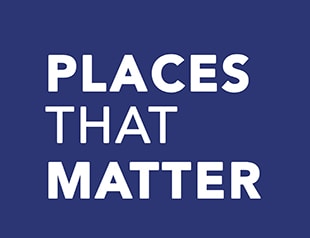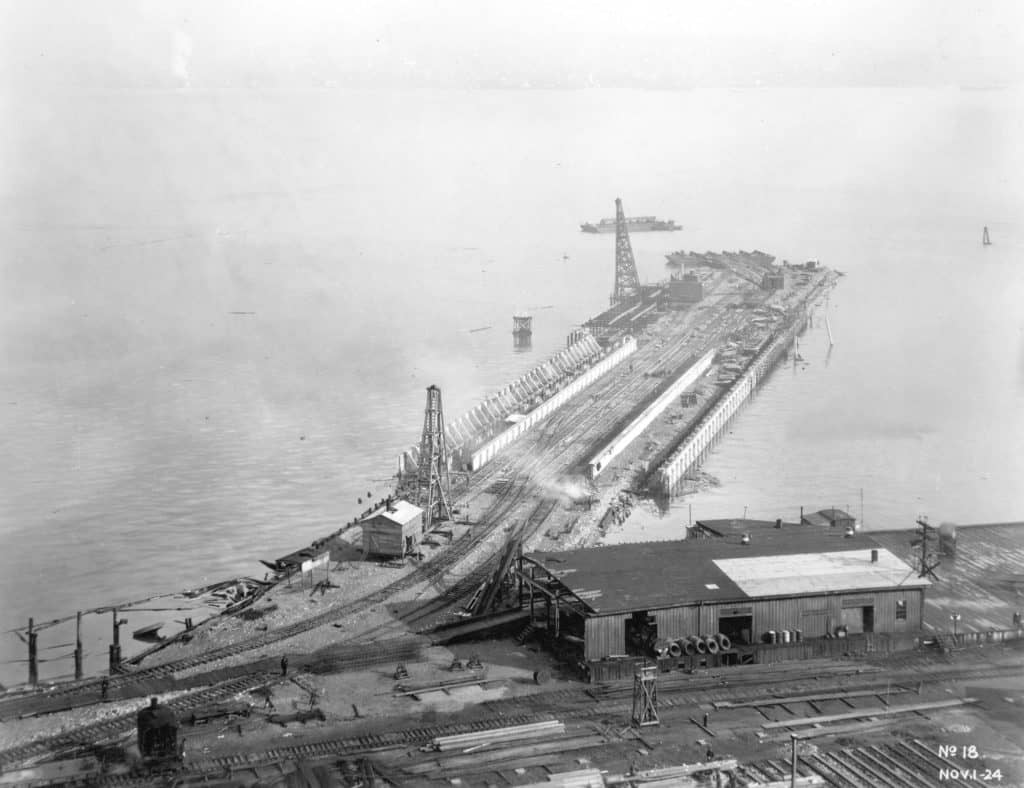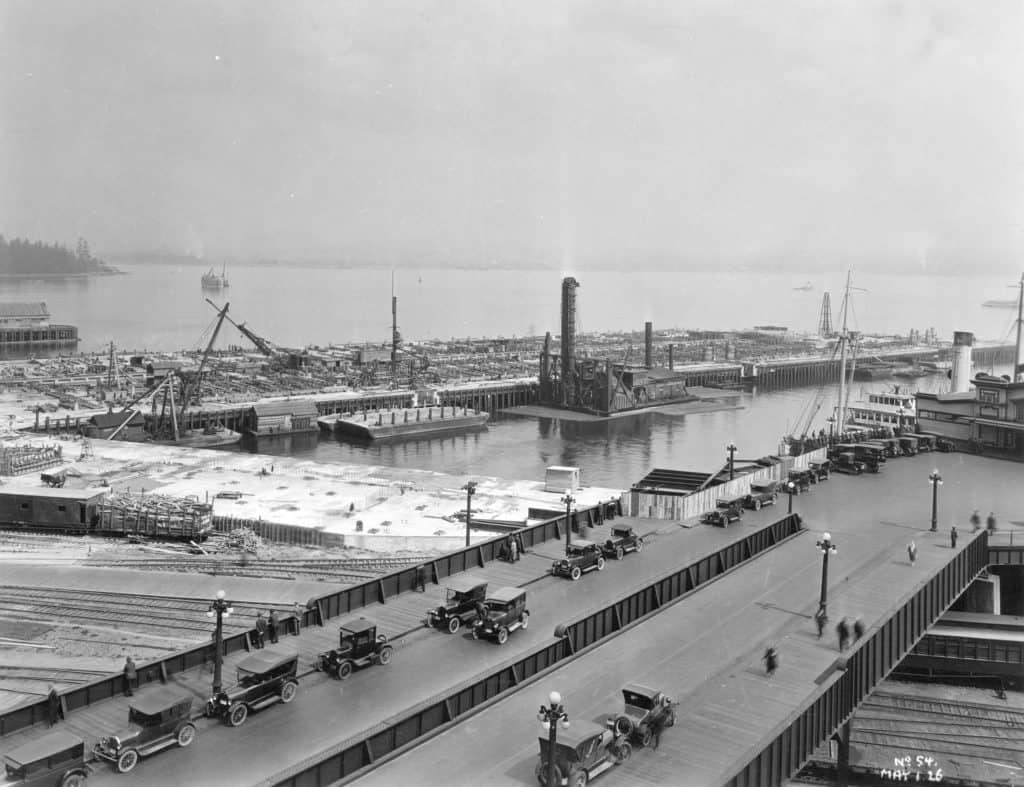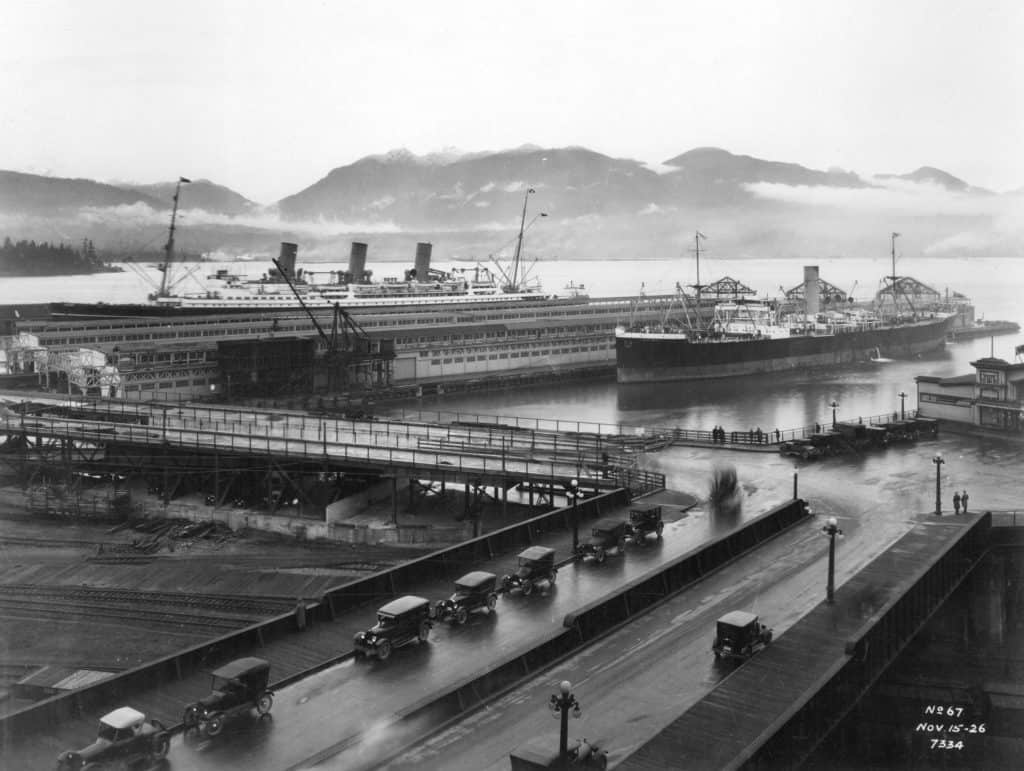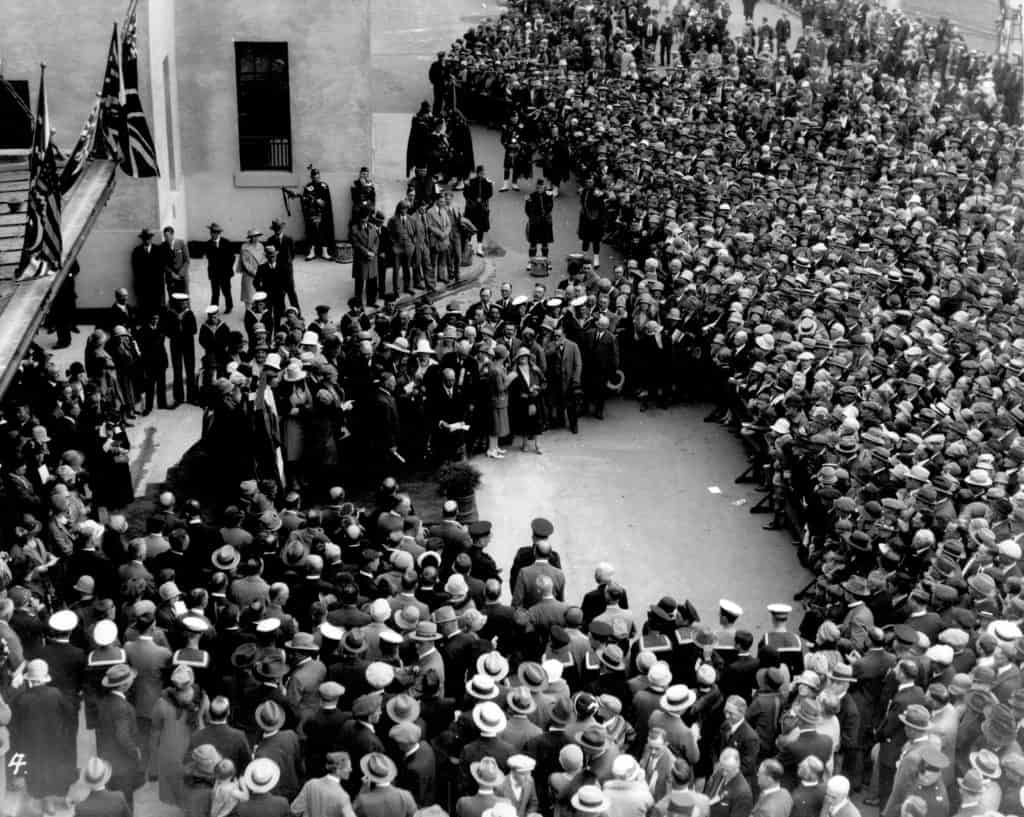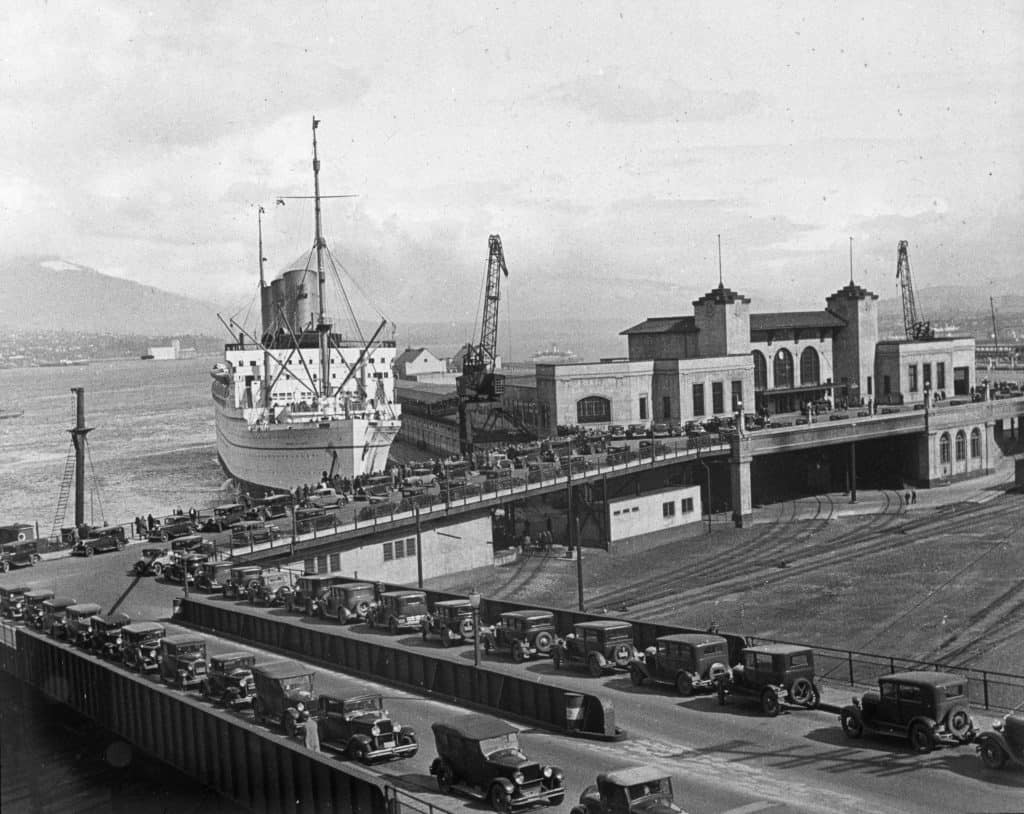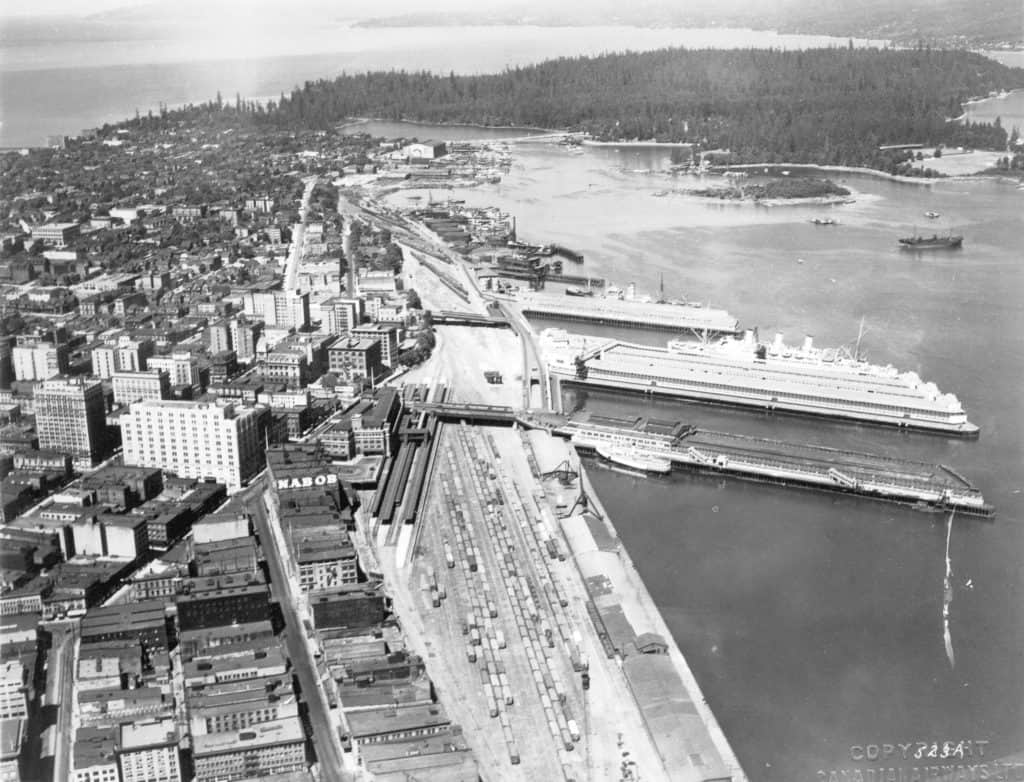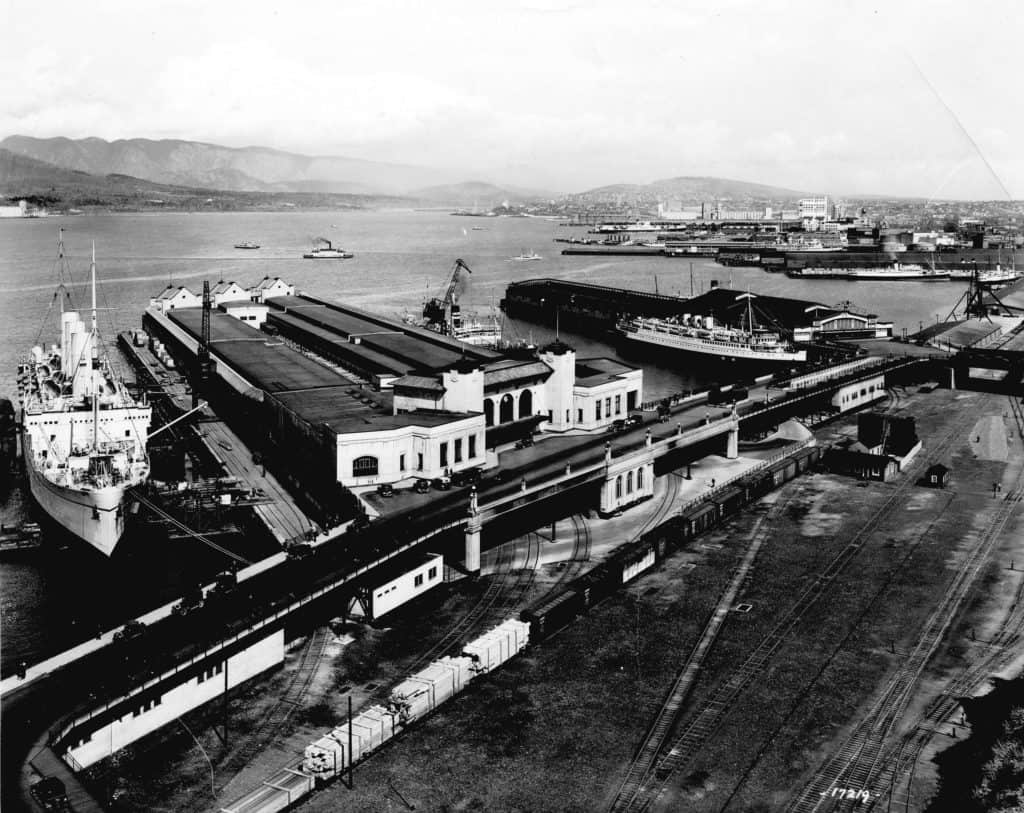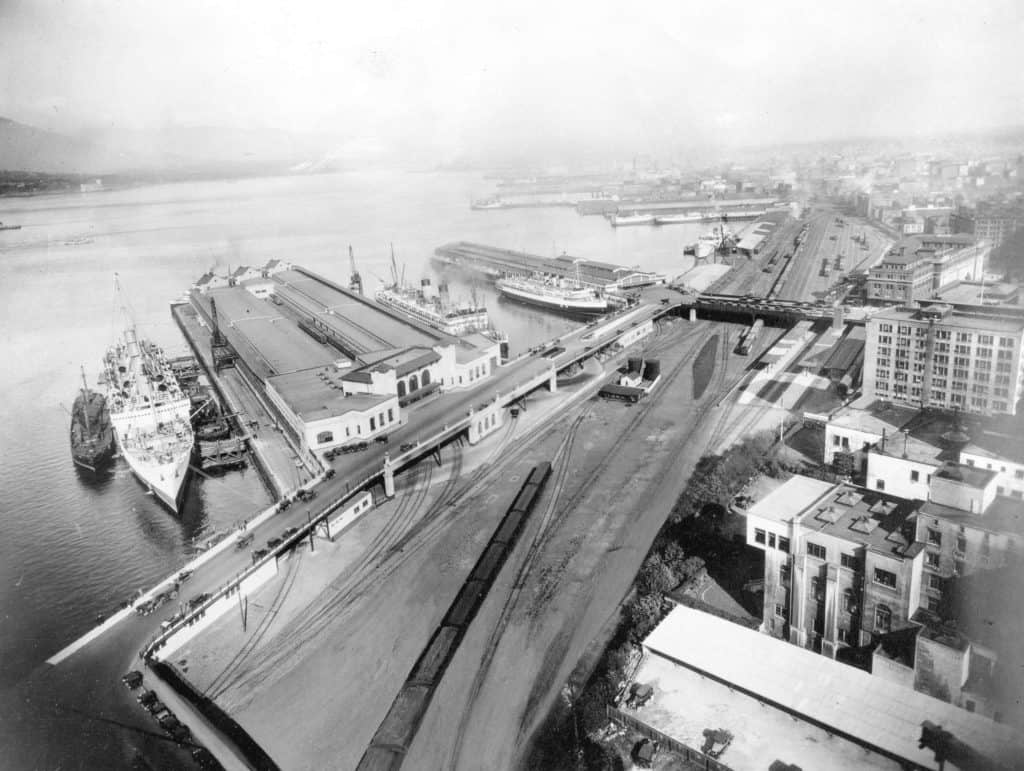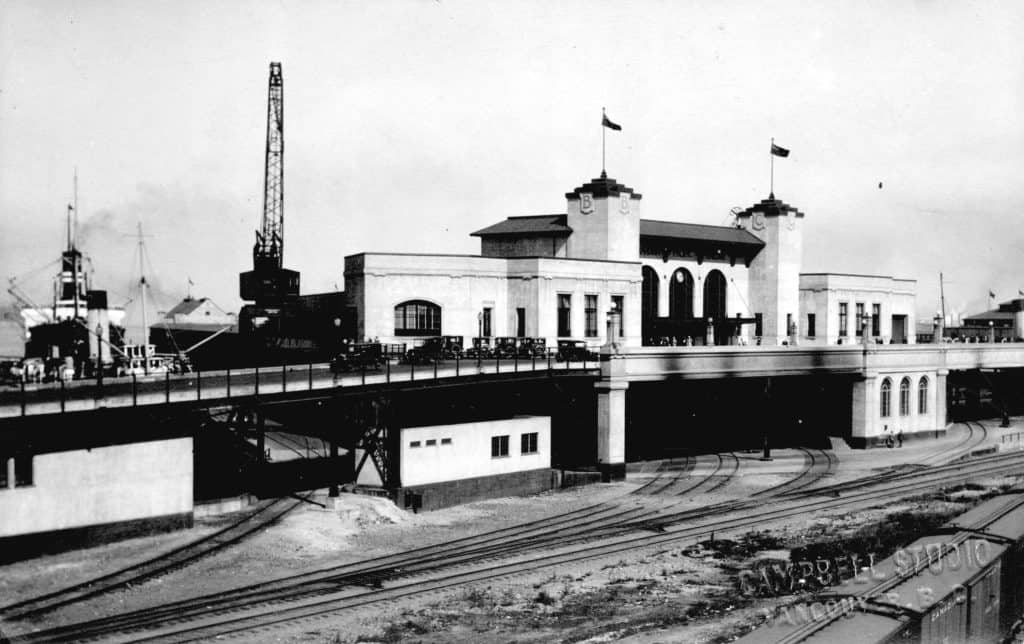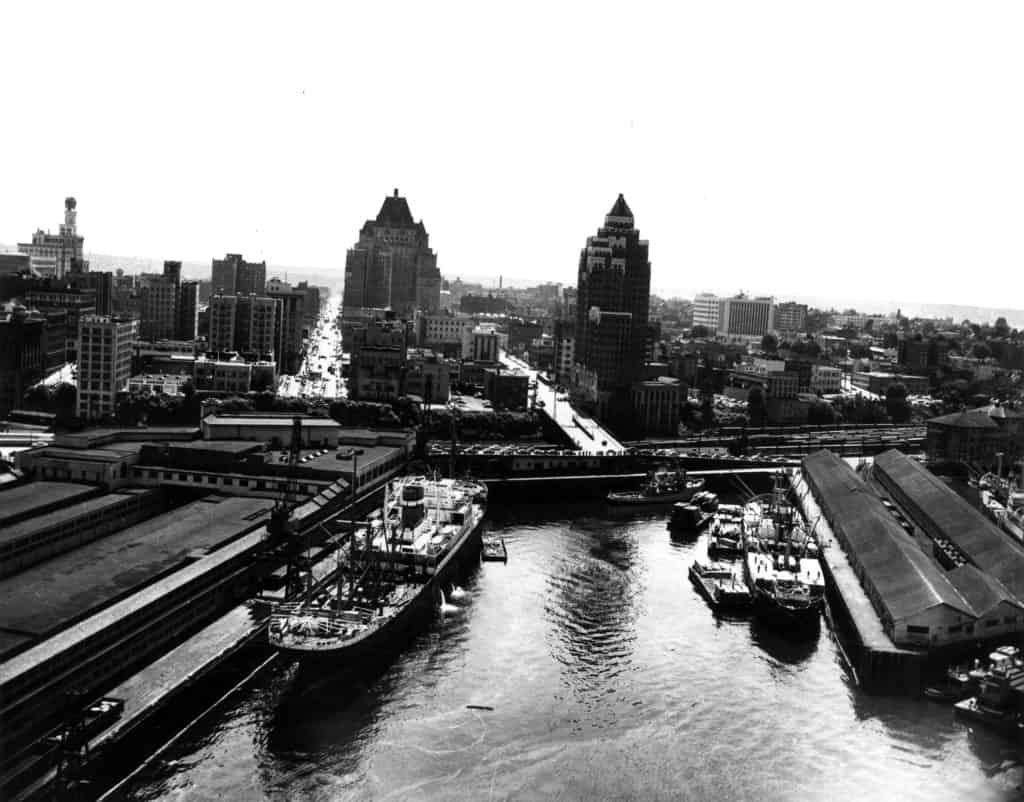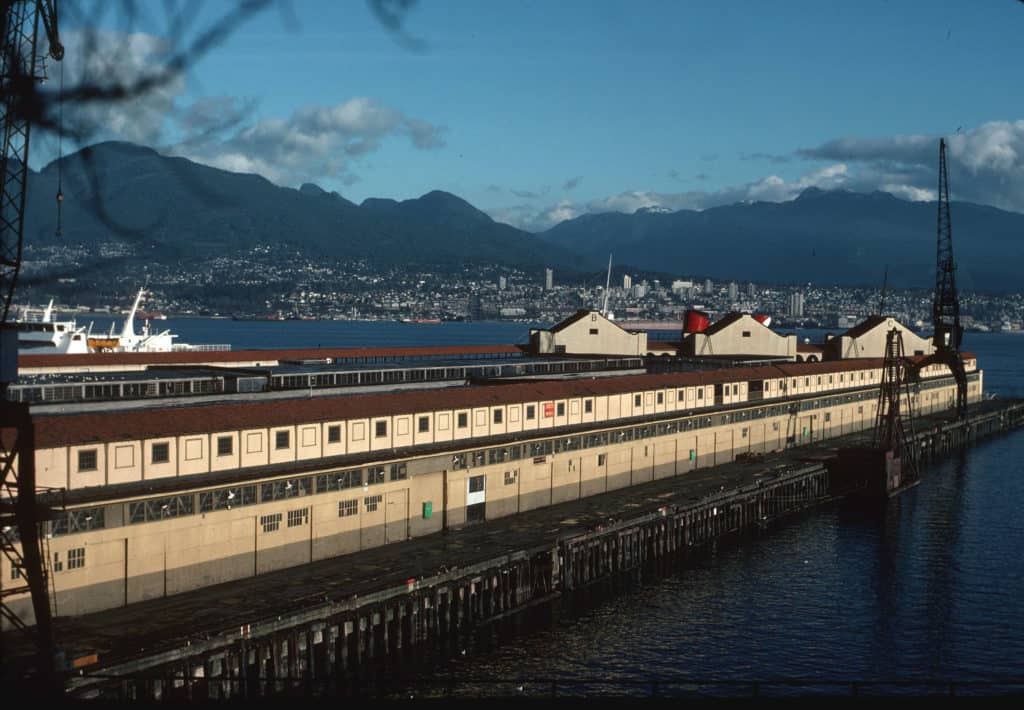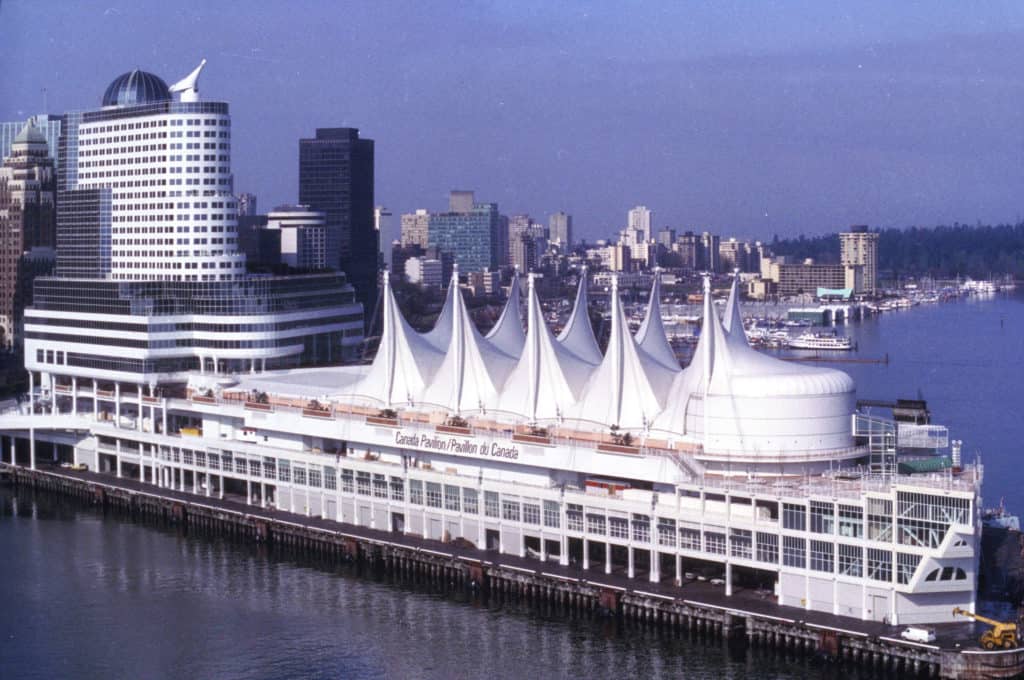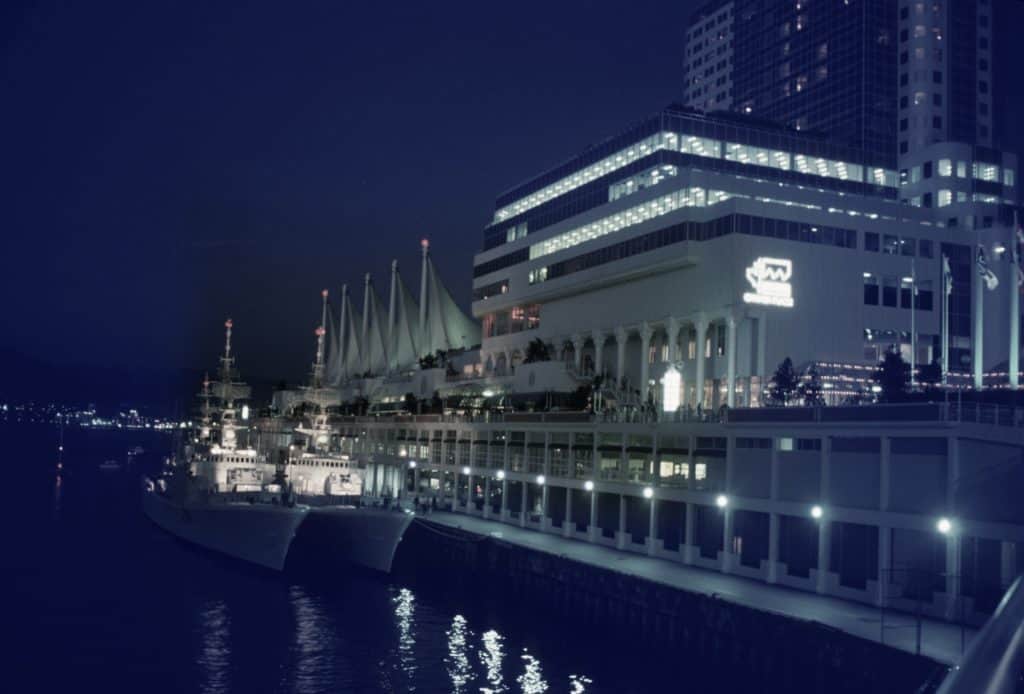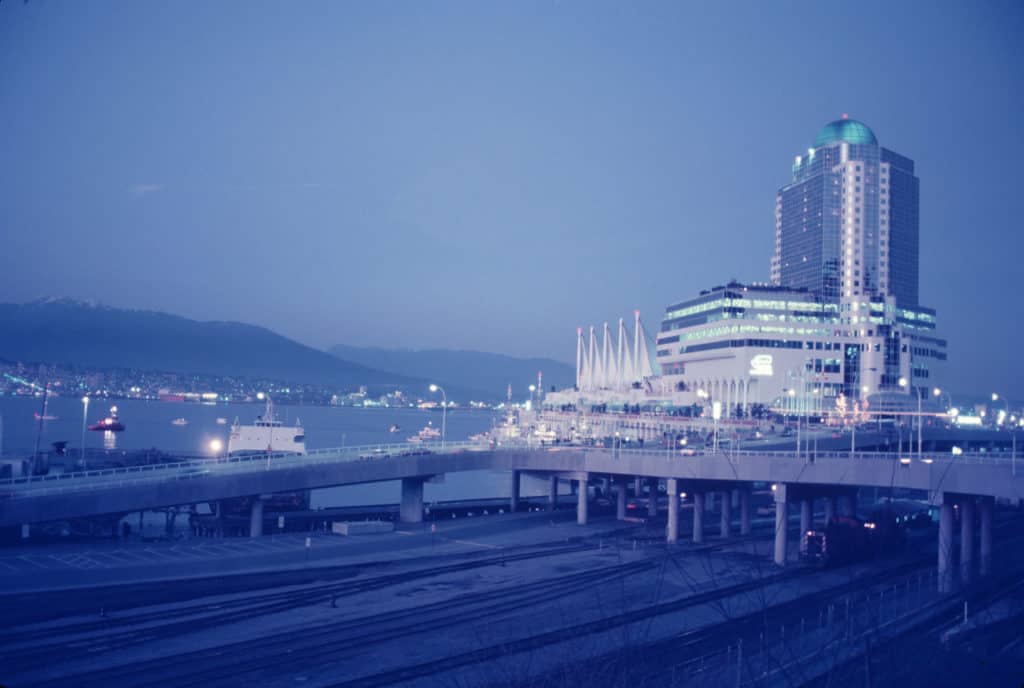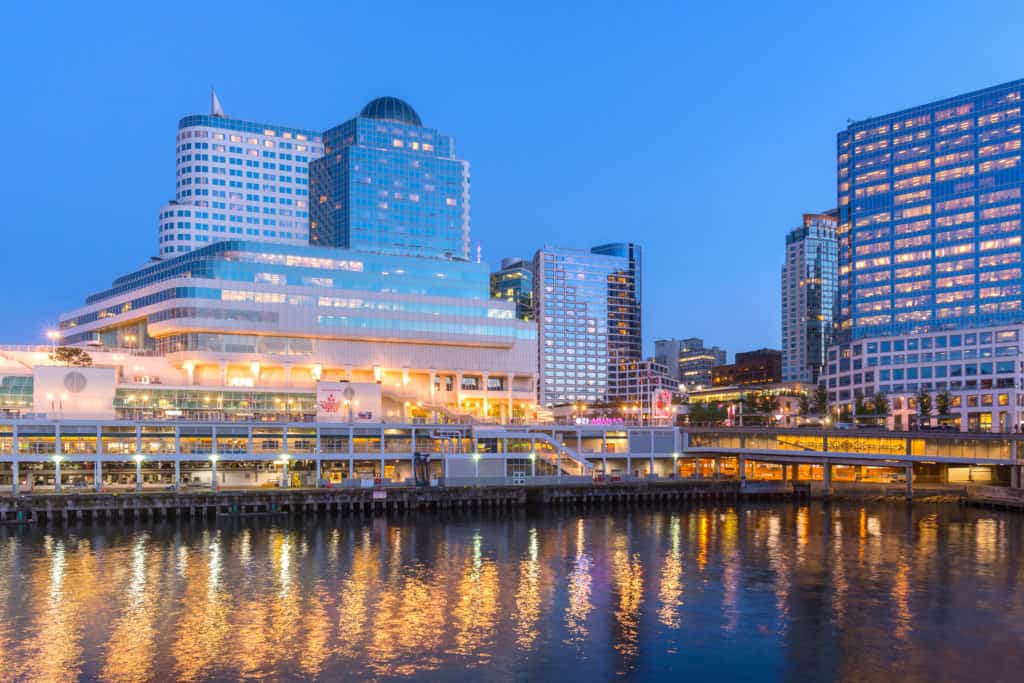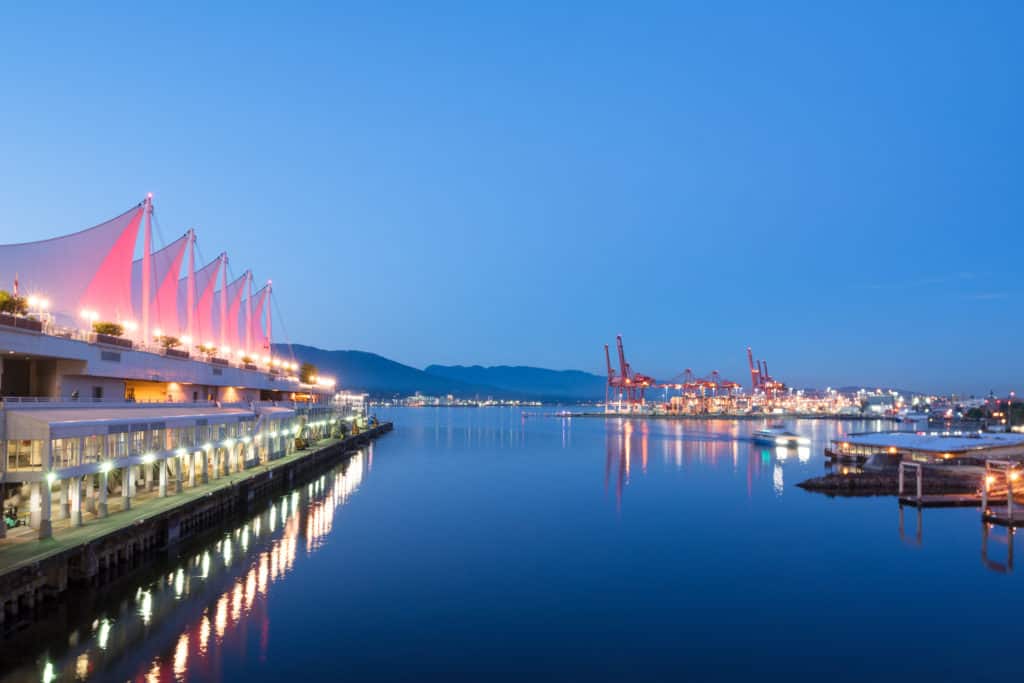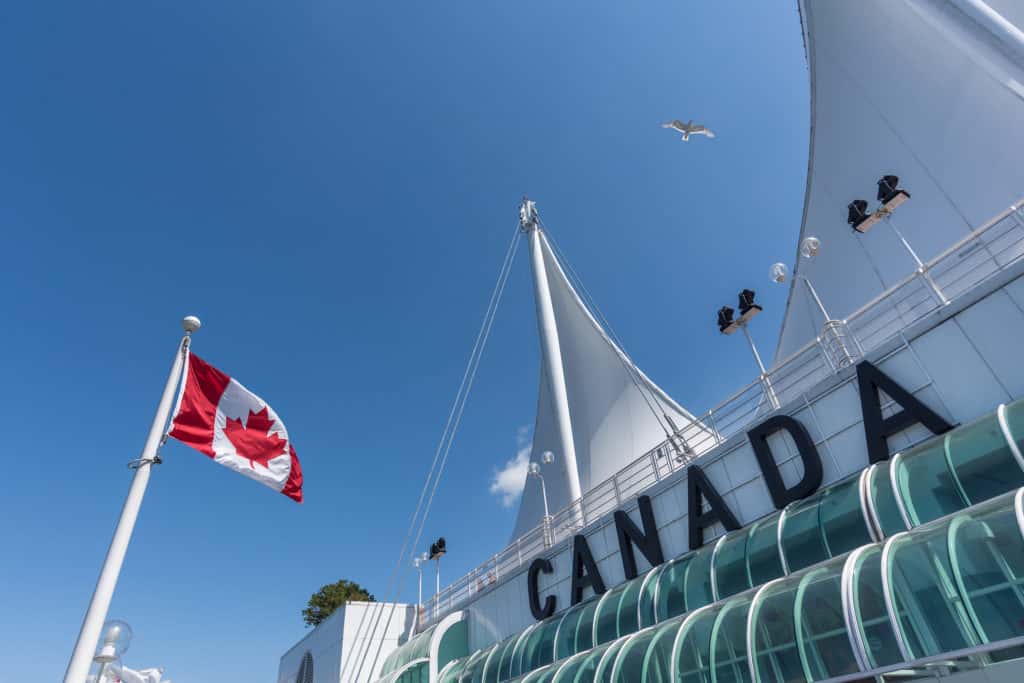The original Pier B.C.
The land upon which Canada Place was built has historical beginnings as the Canadian Pacific Railway (CPR) Pier B-C. This land was granted to CPR for the construction of a railway from sea to sea. Built in 1927, Pier B-C’s primary purpose was to serve Canadian Pacific, including its great trans-pacific liners which included the company’s own Empress ships, as they arrived and departed on their way to Australia, New Zealand and the Orient. The pier also served the development of British Columbia and the CP Steamships coastal fleet which transported people, vehicles and cargo to virtually every accessible portion of the coast and Vancouver Island until 1955. Long-distance ocean travel began to wane with the advent of long haul flights and the pier and its operations were wound down through the 1970s. At the same time, discussion began about the need for a convention centre and cruise ship facilities in Vancouver.
Expo 86 Pavilion
Canada Place, Vancouver’s original trade and convention centre and cruise ship terminal, was constructed on the footings of Pier B.C. as the Canada Pavilion for the 1986 World’s Fair – Expo 86. Construction began when Queen Elizabeth II arrived on the royal yacht Britannia with Prime Minister Pierre Trudeau and B.C. Premier William R. Bennett to initiate the first concrete pour on the site. The Pavilion was officially opened by Prince Charles and Prime Minister Brian Mulroney. Canada Place hosted more than 5 million visitors prior to its closing date on October 13, 1986 and was widely acknowledged as one of the best host nation pavilions at a world exposition. The design by Zeidler, Roberts Partnership with Musson Cattell Mackey Partnership and Downs Archambault and Partners makes allusions to sailing ships and other iconic waterfront icons such as the Sydney Opera House – appropriate given the city’s long historic ties to Australia.
Convention Centre and Cruise Ship Terminal
After the fair, Canada Place was easily adapted for its intended role as a convention centre and cruise ship terminal. The cruise ships continued the pier’s long history with travel. Canada Place is home port to the Vancouver-Alaska cruise, and houses Vancouver Convention Centre East, Pan Pacific Hotel, FlyOver Canada, World Trade Centre and West Park. Throughout the year, the site plays host to many community events and public celebrations, including Canada Day fireworks and concerts. Its Heritage Horns, which boom out the first four notes of “O Canada” at midday from the roof of the Pan Pacific Hotel, were acquired from the B.C. Hydro Building in 1994.
Sources
- Harold Kalman and Robin Ward. “Robson Square,” in Exploring Vancouver: The Architectural Guide. Douglas & McIntyre, 2012: pp. 142-143
- Canada Place website.
Nearby Places That Matter
